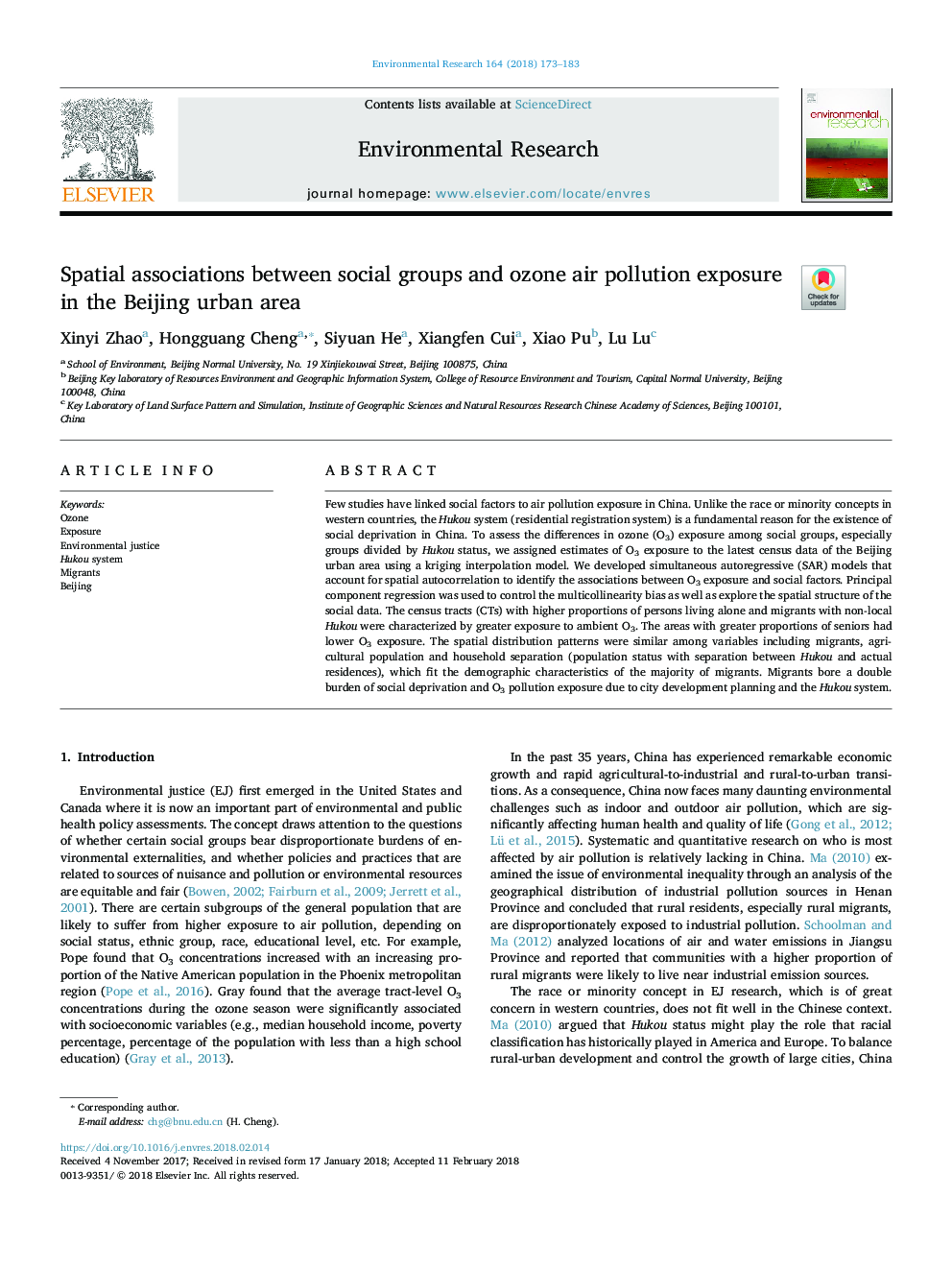| Article ID | Journal | Published Year | Pages | File Type |
|---|---|---|---|---|
| 8869071 | Environmental Research | 2018 | 11 Pages |
Abstract
Few studies have linked social factors to air pollution exposure in China. Unlike the race or minority concepts in western countries, the Hukou system (residential registration system) is a fundamental reason for the existence of social deprivation in China. To assess the differences in ozone (O3) exposure among social groups, especially groups divided by Hukou status, we assigned estimates of O3 exposure to the latest census data of the Beijing urban area using a kriging interpolation model. We developed simultaneous autoregressive (SAR) models that account for spatial autocorrelation to identify the associations between O3 exposure and social factors. Principal component regression was used to control the multicollinearity bias as well as explore the spatial structure of the social data. The census tracts (CTs) with higher proportions of persons living alone and migrants with non-local Hukou were characterized by greater exposure to ambient O3. The areas with greater proportions of seniors had lower O3 exposure. The spatial distribution patterns were similar among variables including migrants, agricultural population and household separation (population status with separation between Hukou and actual residences), which fit the demographic characteristics of the majority of migrants. Migrants bore a double burden of social deprivation and O3 pollution exposure due to city development planning and the Hukou system.
Related Topics
Life Sciences
Environmental Science
Health, Toxicology and Mutagenesis
Authors
Xinyi Zhao, Hongguang Cheng, Siyuan He, Xiangfen Cui, Xiao Pu, Lu Lu,
